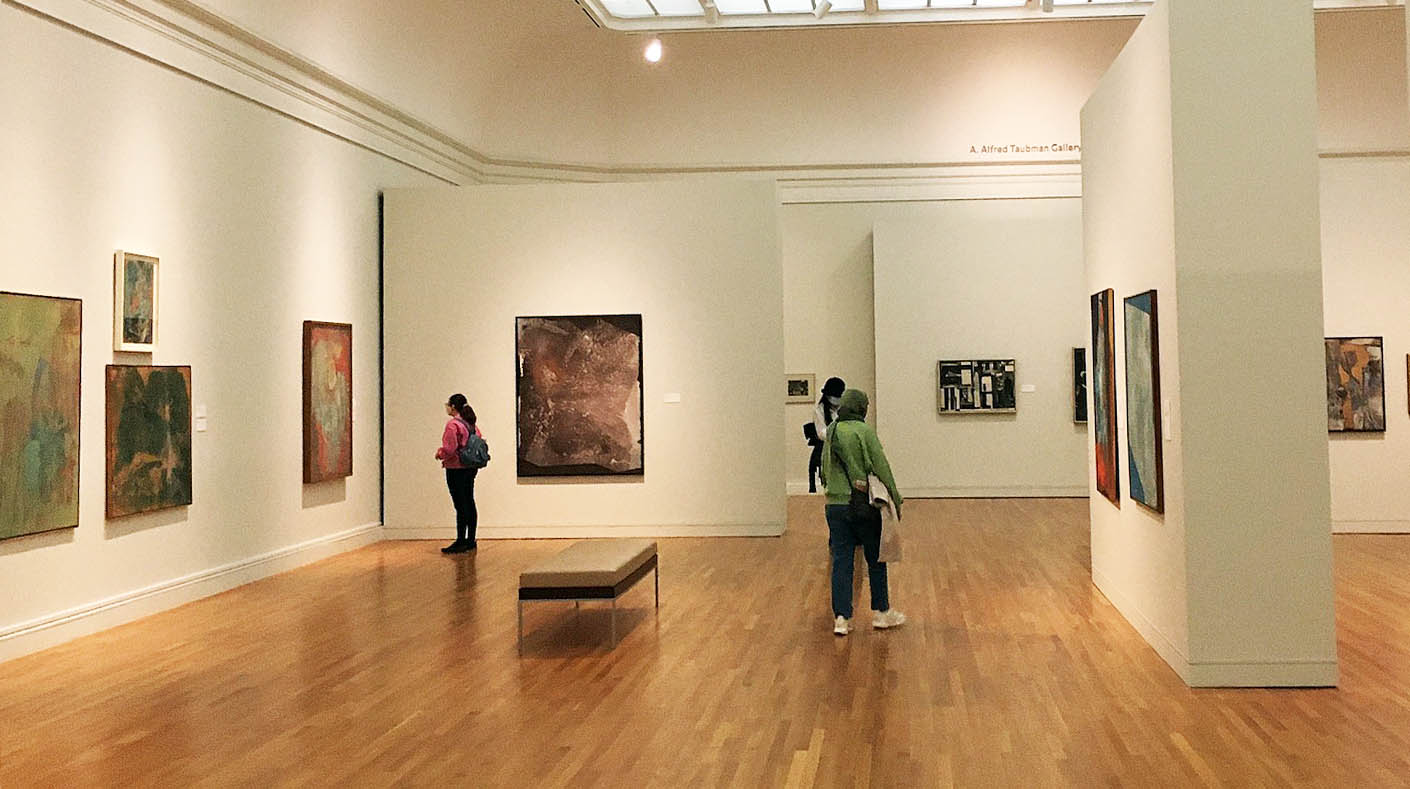
An installation view of “Romare Bearden: Abstractions,” at the University of Michigan Museum of Art through May 15.
“Romare Bearden: Abstractions” at the University of Michigan Museum of Art through May 15 tackles work the African-American artist produced between 1952 and 1964, what some scholars call Bearden’s “forgotten decade.” That characterization is intriguing since he exhibited and won commissions during those years. But the pieces he was showing at the time – abstract oils and watercolors, as well as highly stylized figurative works — have since been elbowed aside by the blistering originality of Bearden’s Cubist-inflected collages and photomontages depicting everyday Black life.
For contrast and context, a number of those are also on display in this exhibition. But there’s no disputing the collages are what won the Charlotte, North Carolina native his place in art history. Indeed, in its 1988 obituary, the New York Times called Bearden “the nation’s foremost collagist.”
“Abstractions,” organized by the American Federation of Arts and SUNY’s Neuberger Museum of Art at Purchase College, considers the artist’s formative period in Paris and New York, one that ultimately led to an epiphany about what his art was supposed to do. Bottom line? In an era defined by the Civil Rights struggle, Bearden and many other Black artists felt abstraction was too pure, too apolitical, too far-removed from the demands of the age. So he put it down and turned his energy elsewhere.
“I felt,” Bearden said, “that the Negro was becoming too much of an abstraction, rather than the reality that art can give a subject.” He realized he had to “establish a world through art in which the validity of my Negro experience could live and make its own logic.” That led to the collages – and co-founding Harlem’s Spiral arts collective, whose members tried to work out the responsibility of the Black artist in an era of political and racial upheaval.
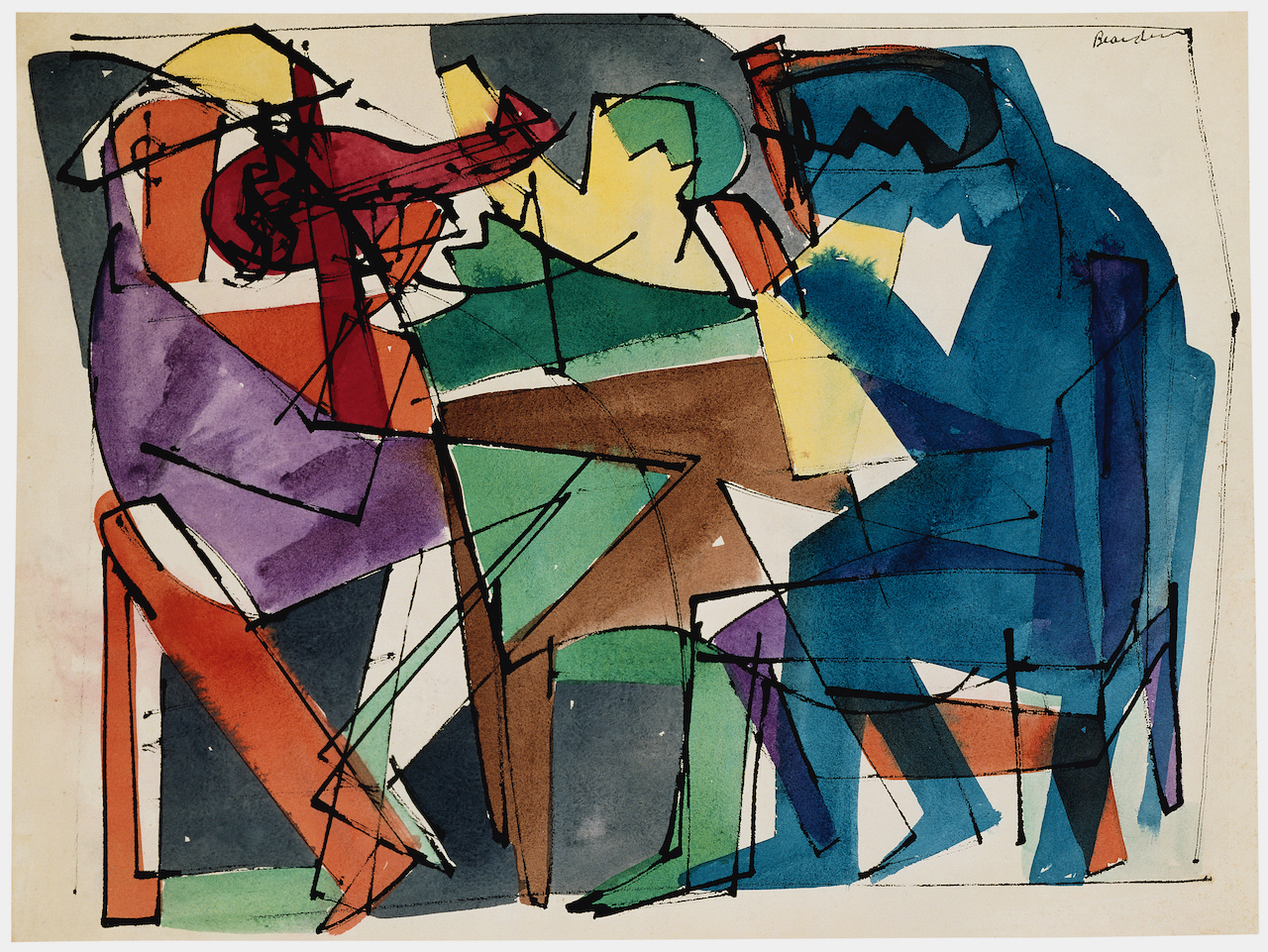
Romare Bearden, The Blues Has Got Me, 1944; Watercolor and ink on paper 29 x 35 ½ inches, SCAD Museum of Art, Savannah, GA, Permanent Collection, Gift of Dr. Walter O. Evans and Mrs. Linda J. Evans©, Romare Bearden Foundation / VAGA at Artists Rights Society (ARS), NY Courtesy American Federation of Arts
American culture is the richer for Bearden’s shift into collages, but there’s no denying much of his earlier work is gorgeous. Particularly striking are four or five small, stylized water colors, all painted in exquisite tones, that straddle the line between the literal and the abstract. “The Blues Has Got Me” from 1944, for example, is a portrait of two musicians jamming, though only one instrument, a fiddle or violin, is recognizable. The painting is a pleasing mash-up of competing colors and colliding triangles that form legs, chairs and a table. It’s bursting with energy, and frankly fun to examine.
In tone and feel, however, it could hardly be more different from 1962’s “River Mist,” one of Bearden’s later oil abstracts that’s a dreamy, almost geologic study in blue water tones and soft terra cotta. Long versed in watercolor, Bearden had struggled through much of the 1950s with oils. But when he and his wife Nanette moved from Harlem to a downtown loft on Canal Street, where Bearden spent the rest of his life, the artist began experimenting with much larger-scale works and developed his signature approach to abstract art.
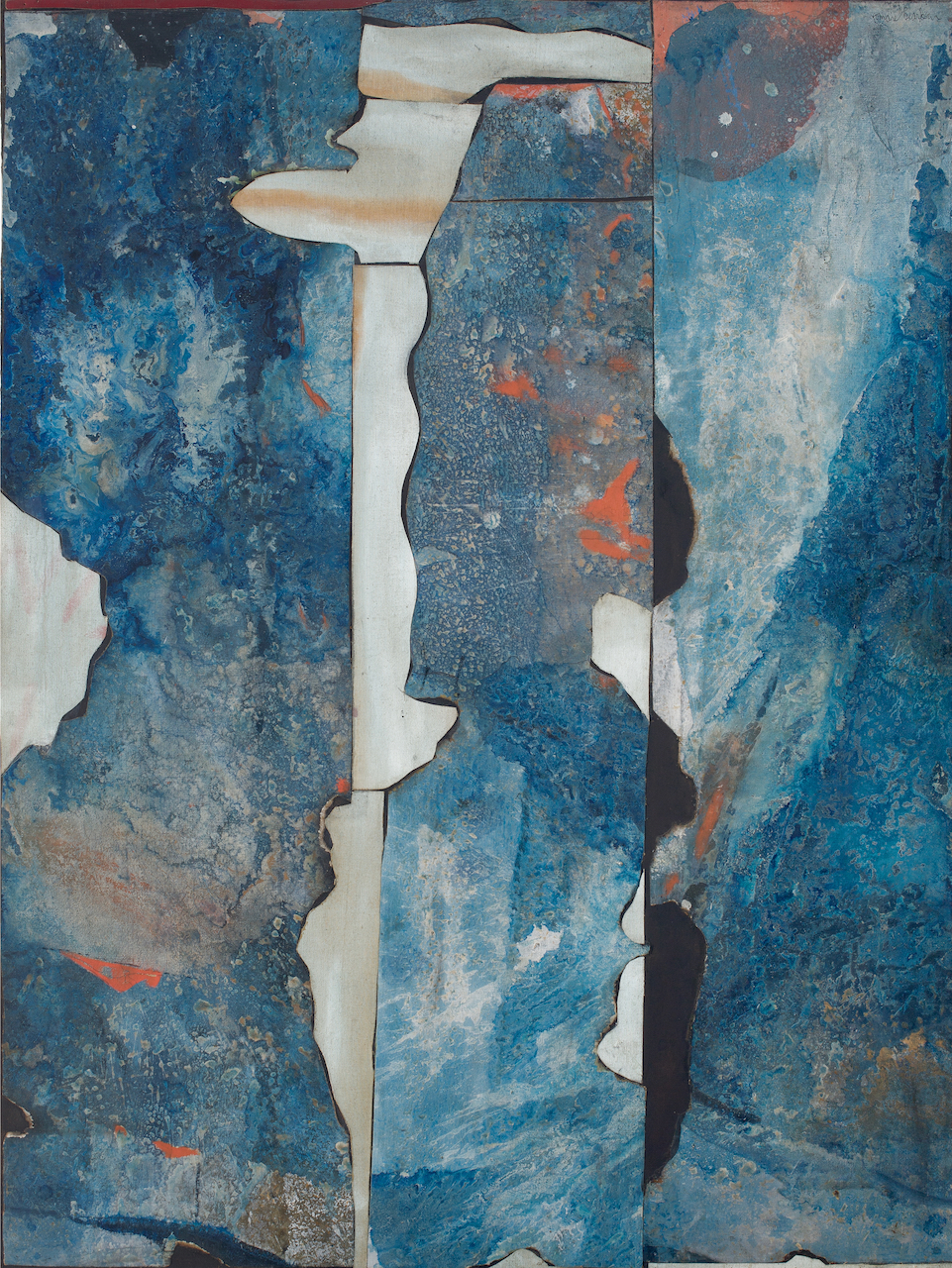
Romare Bearden, River Mist, ca. 1962; Oil on unprimed linen, and oil, casein, and colored pencil on canvas, cut, torn, and mounted on painted board 54 ¼ x 40 7/8 inches, Romare Bearden Foundation, Courtesy of DC Moore Gallery, New York© Romare Bearden Foundation / VAGA at Artists Rights Society (ARS), NY, Courtesy American Federation of Arts
During this period, he also started studying with a Chinese master, identified only as a Mr. Wu on Bayard Street, in the techniques of Chinese calligraphy and ink-wash painting. That influence is especially visible in “Eastern Gate” from 1961, a diaphanous exercise in shades of pinkish beige crisscrossed by what appear to be fragments of calligraphy.
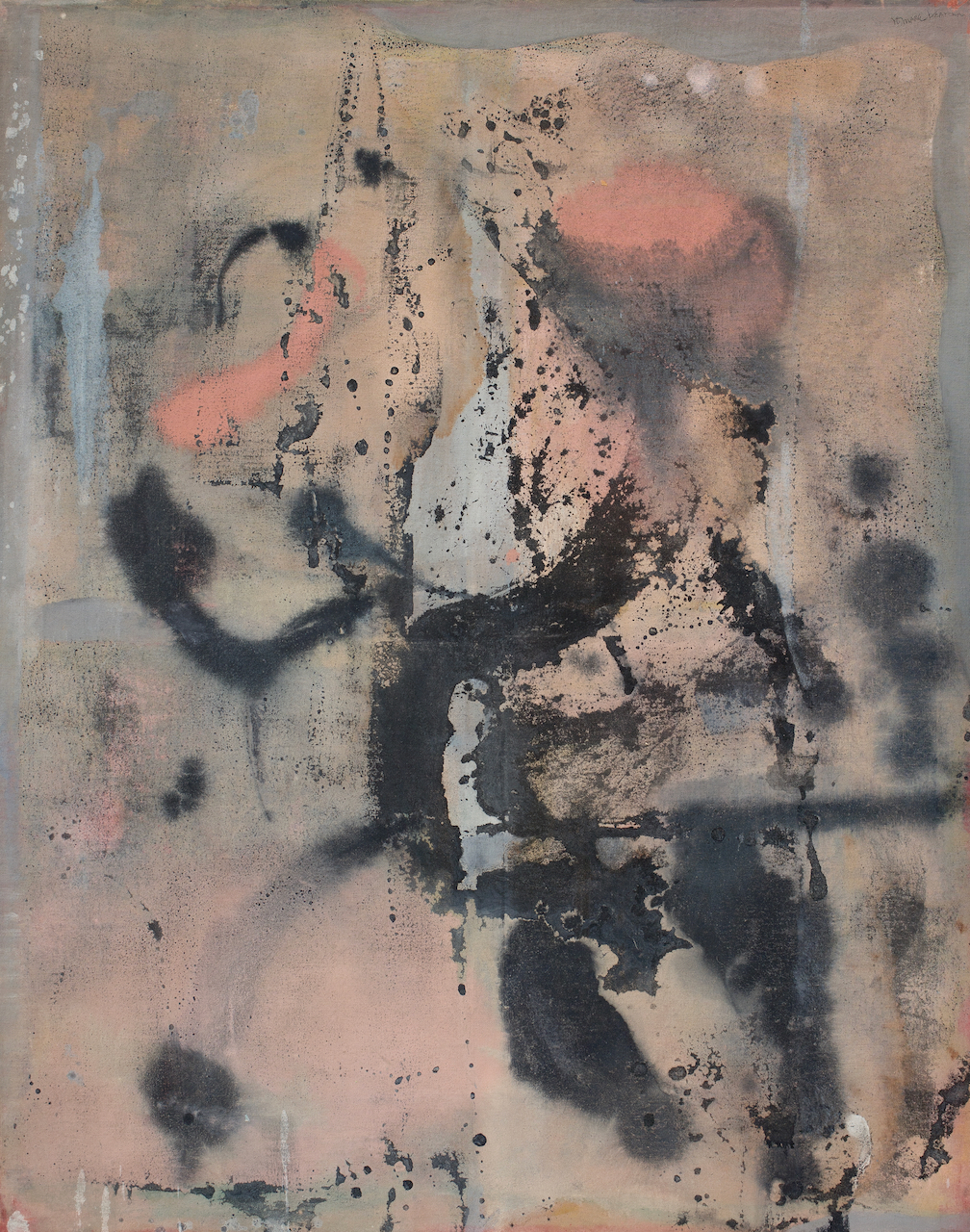
Romare Bearden, Eastern Gate, ca. 1961; Oil on canvas 55 7/8 x 44 inches, Romare Bearden Foundation, Courtesy of DC Moore Gallery, New York©, Romare Bearden Foundation / VAGA at Artists Rights Society (ARS), NY, Courtesy American Federation of Arts
Romare Howard Bearden was born in 1911 in Charlotte, North Carolina, but his parents moved to Harlem when he was very small. His father was a pianist, while his mother was a political activist, and the two created a rich, intellectually vibrant household for a young person to grow up in. The Bearden apartment became a favorite stopping-off point for poet Langston Hughes and other members of the Harlem Renaissance.
The teenaged Bearden ended up finishing high school in Pittsburgh while living with his grandparents, but after a stint at Boston University, he transferred to New York University, where he studied with the great satiric German artist George Grosz. After enlisting in the army during World War II, Bearden took advantage of the GI Bill and spent 1950 at the Sorbonne reading philosophy. While in the City of Lights he met writer Richard Wright as well Pablo Picasso, George Braque, and Constantin Brancusi – becoming good friends with the latter.
“Abstractions” is organized more or less chronologically, so you pass through galleries hung with large abstracts, and then round a corner and suddenly find yourself surrounded by the later collages. It’s a bracing, delightful shift in dynamism and excitement. Simply put, the collages – which often mix the beautiful and the bizarre – bristle with energy and veiled meaning.
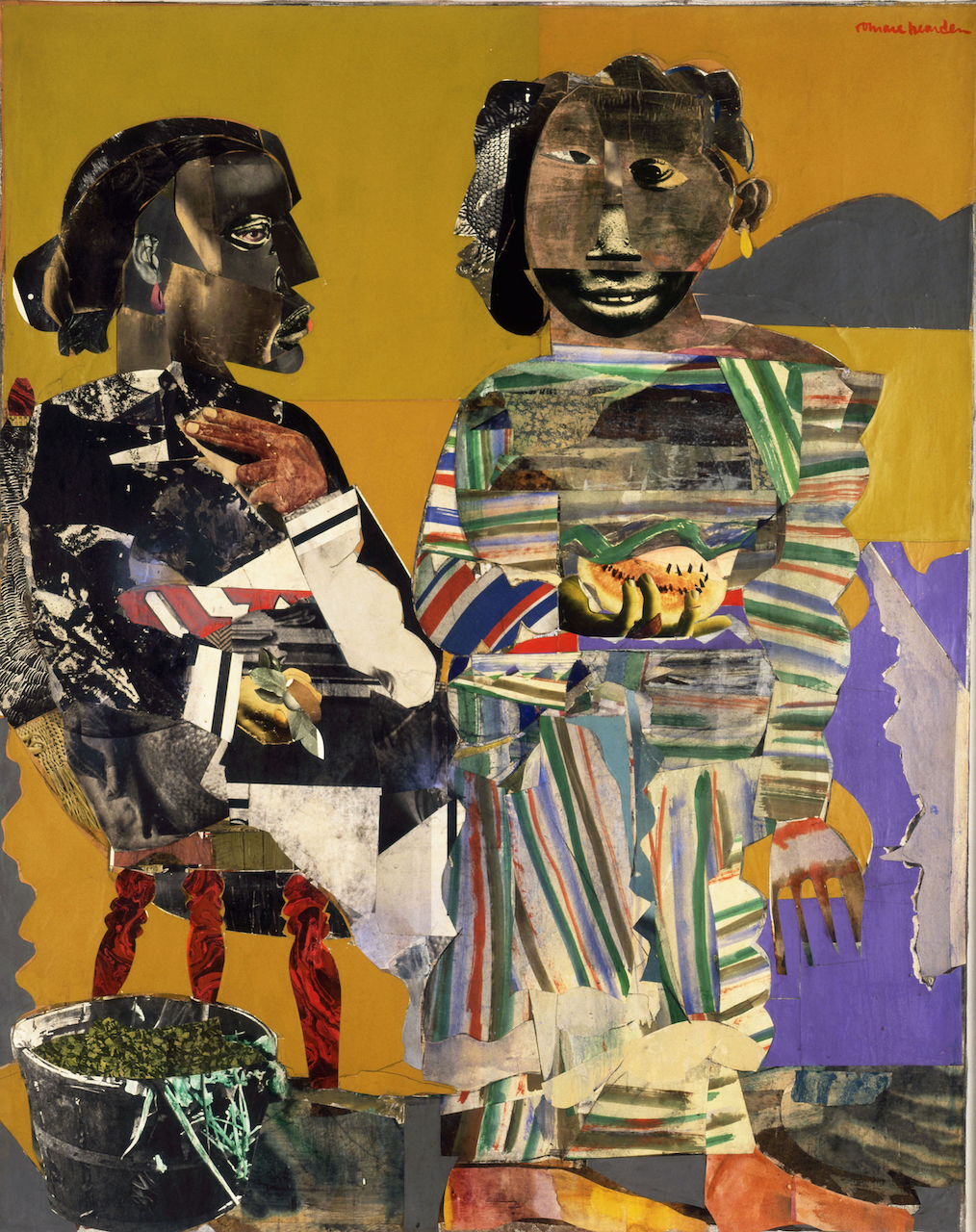
Romare Bearden, Melon Season, 1967; Mixed media on canvas 56 ½ x 44 ½ inches, Collection Neuberger Museum of Art, Purchase College, State University New York, Gift of Roy R. Neuberger, 1976.26.45 ©, Romare Bearden Foundation / VAGA at Artists Rights Society (ARS), NY, Courtesy American Federation of Arts
One of the most striking is the 1967 “Melon Season,” a startling collage of two African-American women, in which the Cubist influence is undeniable. The woman at left is austere and rather beautiful, her profile comprised of contrasting black squares. For her part, the woman on the right has a deformed face patched together with three or four different graphic elements, one eye a good inch above the other, giving her a slightly daft look. It’s a little shocking, frankly, yet it’s precisely that tension between composure and disturbance that gives this grave work its magnetism
You’ll find “Abstractions” on UMMA’s second floor, in the A. Alfred Taubman Gallery 1. But before ascending the grand curved staircase, consider wandering the small exhibition, “You Are Here,” hung in the apse on the first floor of the original, neoclassical building. This show features pieces from the museum’s own collection that vault across centuries and genres. The superstar here is Kehinde Wiley’s 2008 “Saint Francis of Assisi,” based on Giovanni Bellini’s “St. Francis in the Desert” from 1480. But all the works selected by Jennifer M. Friess, UMMA associate curator of photography, are compelling. And as she encourages us, by all means, do play with Harry Bertoia’s small, elegant sound sculpture. You won’t regret it.
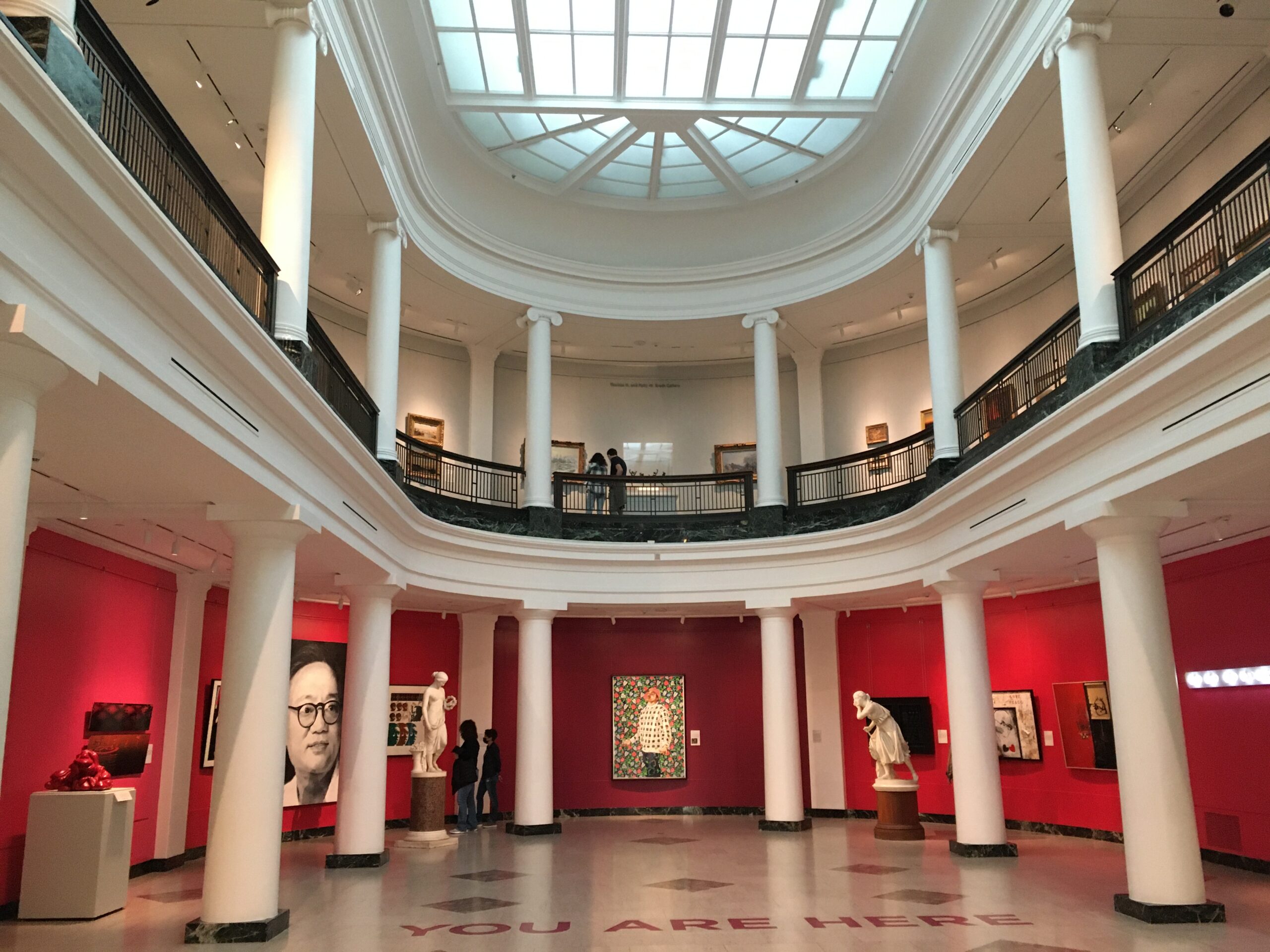
An installation view of “You Are Here” at the University of Michigan Museum of Art through May 7.
“Romare Bearden: Abstractions” is at the University of Michigan Museum of Art through May 15. “You Are Here” will be up through May 7.
